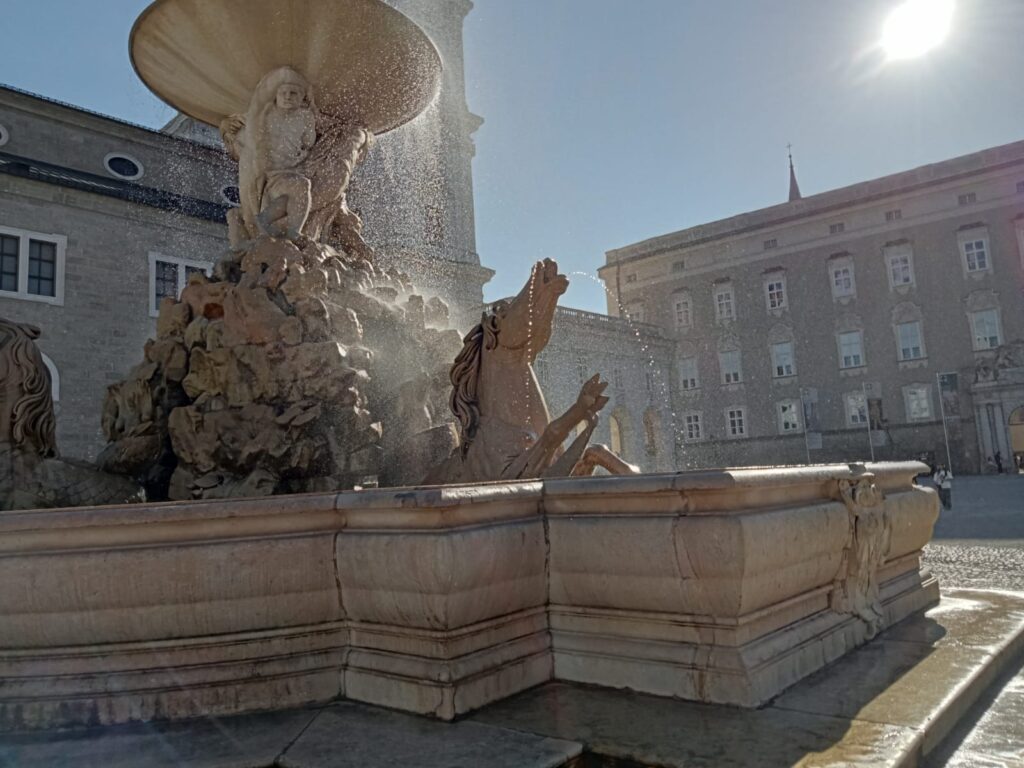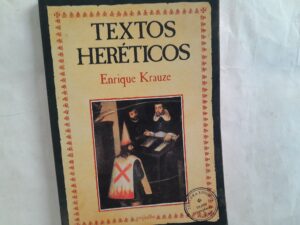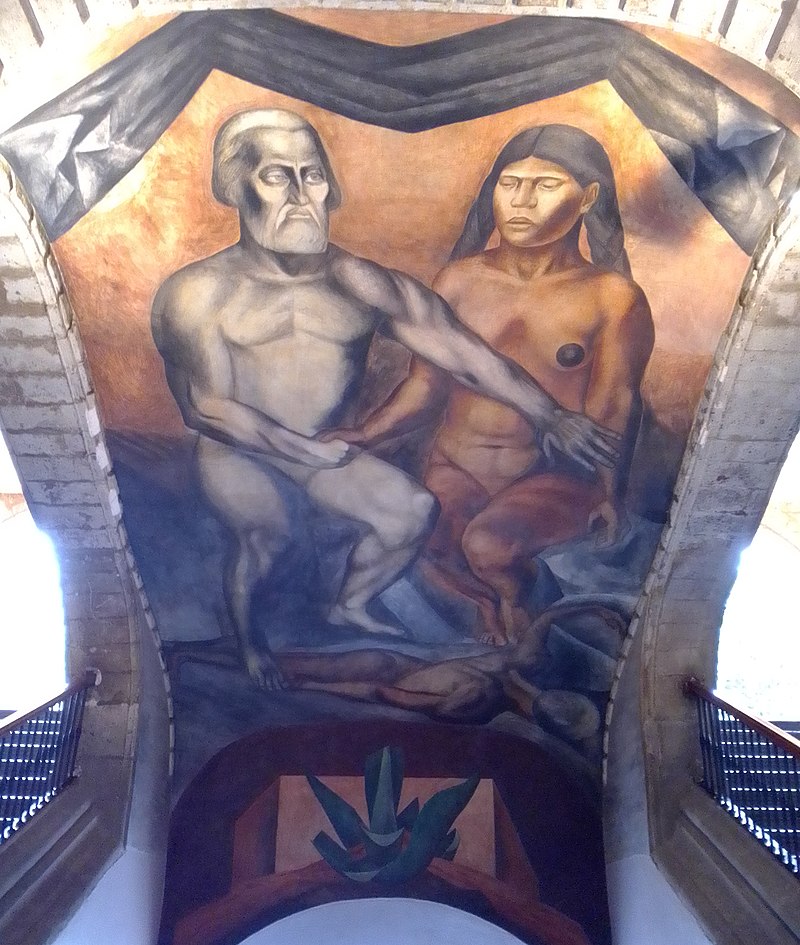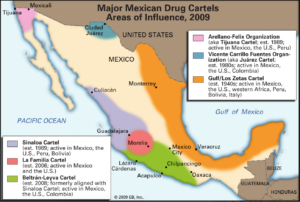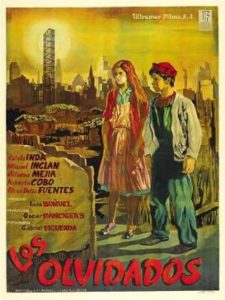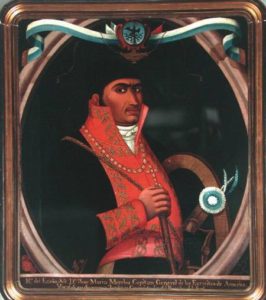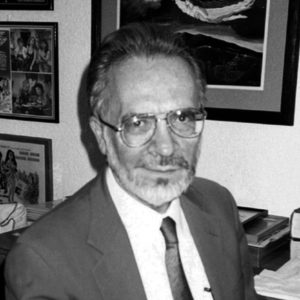Lebenskraft ! (8)
Salzburg
On March 20th I posted the entry ‘Salzburg’ where I said that, due to the town without a white man where I temporarily live, The Sound of Music was a very therapeutic experience. My recent visit to the real Salzburg reversed my feelings in an unusual way. But let’s take it one step at a time…
When I got off the bus, the first thing I did was to photograph some of the buildings I had seen in the film, like the ones you can see in the opening title credits. It didn’t take me long to find out things about the city considered the most beautiful in Austria that I didn’t like.
Deo optimo maximo, abbreviated as DOM, is a Latin phrase that in the ancient world meant ‘for the greatest and best God’ in reference to Jupiter. When Constantine imposed Christianity as the official religion, the phrase took on the same meaning but to refer to the god of the Jews.
In this Salzburg building we can see, if we enlarge the photo, the DOM above the door but it no longer refers to the God of the Aryans, but to the god of the Jews that even many white nationalists still worship. That is the real Salzburg! In fact, there are still monasteries inhabited by monks, theological schools and churches, mostly Catholic in the city.
Mozart is celebrated everywhere here because he was born in Salzburg, but when I had a delicious Fruling Salad (it was asparagus season) at Koller & Koller on Waagplatz, degenerate music was playing inside the restaurant. In that square I photographed a fountain that appeared in a scene I love from The Sound of Music: when Maria, starring Julie Andrews, throws water on the horse after she is thrown out of the convent in song and with great spirit heads for her new home. I took a pic:
There are a couple of confessions in this entry that will surprise the reader. If we set aside the anti-Nazi propaganda of The Sound of Music, that film—which I saw on the big screen sixty years ago!—so beloved by Aryans after so many, many years, is worth more than Mozart’s legacy. Why?
Because, even if Hollywood’s intention was malicious (the anti-Nazi message), The Sound of Music represents, on film, what Maxfield Parrish’s images represent: an ode to the most beautiful specimens of the Aryan race, including children and other characters.
If what moves me to blog is precisely the most beautiful specimens of the race, it is not enough to see them in paintings: the seventh art is capable of portraying them live and in full colour. No wonder that, despite the West’s darkest hour, after six decades this film hasn’t died in the hearts of millions of whites who saw it as children. And it will not die as long as there are whites.
In a previous post I said that the beauty of the artistic buildings of a European city was only the frame, and that the frame is only worthwhile if it contains a good canvas. Well, if we watch this modern video about the locations of The Sound of Music we will discover that, without the beautiful actors, those places have lost their magic.
That is why I am obsessed with preserving the genotype / phenotype of the most beautiful Aryans, like the ones of Parrish or the film: something that is worth more than the music of Mozart or any other classical composer that can be sung by coloureds, as we saw with my bitter experience in Vienna.
The other confession I wanted to make is that this trip reconciled me with my native country and even with the indigenous people where, temporarily, I live. While it is true what Hitler said, that people like me are at a greater psychogenic distance from these Indians than they are from the animal, their presence doesn’t cause me the hatred that the sight of traitorous whites causes me. So if, less than two months ago, in my entry ‘Salzburg’ I tried to visually flee from the town where I write by watching The Sound of Music on my computer, now that I have actually visited the city things are reversed.
In my entry on Hallstatt I said that the world today is, for me, a nightmare. That nightmare means not only being in 21st century Salzburg, where I saw a black man with his baby’s pram, but in the other cities I visited: where it is obvious that the Aryan is committing suicide everywhere.
The Mexican Indians I see as I leave the gated community where I live may be primitive. They may be psychogenically closer to the animal than I am to them. But they aren’t evil people like the Aryans, who after the Second World War have allowed the archetype of the Jewish collective unconscious to take over their souls.
And it all ultimately has to do with the fact that the DOM no longer refers to Zeus / Jupiter, but to the god of the Jews. Is it finally clear why Kalki wants to nuke the cathedrals?

